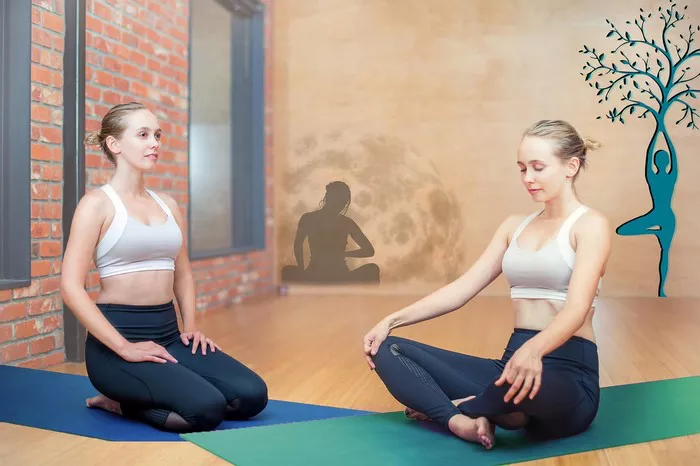A proper warm-up is essential before practicing yoga to prepare the body, enhance flexibility, and prevent injuries. A well-structured warm-up gradually increases circulation, awakens the muscles, and improves mobility, making the practice more effective and enjoyable. In this article, we will explore the importance of warming up, essential warm-up exercises, and tips to customize the warm-up routine to meet individual needs.
The Importance of a Warm-Up in Yoga
A warm-up serves several key purposes in a yoga practice:
Enhances Blood Circulation: A warm-up gradually increases heart rate and circulation, ensuring that muscles receive sufficient oxygen and nutrients.
Prepares the Joints and Muscles: Moving through gentle motions loosens stiff joints and lengthens muscles, reducing the risk of strain.
Increases Flexibility and Mobility: A warm-up improves muscle elasticity, making it easier to perform yoga poses (asanas) safely.
Activates the Breath and Mind: It allows practitioners to connect with their breath, setting a mindful and focused tone for the session.
Prevents Injuries: A proper warm-up minimizes the likelihood of muscle pulls, strains, and joint stress.
Key Elements of a Good Yoga Warm-Up
A comprehensive yoga warm-up should include:
- Gentle joint movements
- Dynamic stretches
- Breath awareness exercises
- Muscle activation movements
Best Warm-Up Exercises Before Yoga
1. Deep Breathing and Centering
Before engaging in movement, it is essential to calm the mind and connect with the breath.
Diaphragmatic Breathing (Dirga Pranayama): Sit comfortably with a straight spine. Inhale deeply through the nose, expanding the belly, then the chest, and finally the collarbones. Exhale slowly, reversing the process.
Ujjayi Breathing: This breath control technique warms up the respiratory system and promotes focus.
2. Gentle Joint Movements
Warming up the joints improves mobility and prevents stiffness.
Neck Rolls: Slowly rotate the head in circular motions to relieve tension.
Shoulder Rolls: Roll the shoulders forward and backward to loosen the upper body.
Wrist and Ankle Rotations: Move the wrists and ankles in circular motions to warm up these smaller joints.
Spinal Rolls: Gently roll the spine forward and backward, engaging the entire back.
3. Dynamic Stretches and Mobility Work
Dynamic movements are essential for waking up the muscles and improving flexibility.
Cat-Cow Stretch: Move between Cat Pose (Marjaryasana) and Cow Pose (Bitilasana) to warm up the spine.
Standing Side Stretches: Raise one arm overhead and gently bend sideways to stretch the obliques and spine.
Seated or Standing Twists: Gently twist the torso from side to side to activate the spine and core.
4. Sun Salutations (Surya Namaskar)
Sun Salutations are an ideal full-body warm-up. They synchronize breath with movement and prepare the body for a deeper practice.
- Start in Mountain Pose (Tadasana) and bring the hands to prayer position.
- Inhale, raise the arms overhead into Upward Salute (Urdhva Hastasana).
- Exhale into Standing Forward Fold (Uttanasana).
- Inhale into Halfway Lift (Ardha Uttanasana).
- Exhale, step back into Plank Pose.
- Lower into Chaturanga Dandasana (Four-Limbed Staff Pose).
- Inhale into Upward-Facing Dog (Urdhva Mukha Svanasana).
- Exhale into Downward-Facing Dog (Adho Mukha Svanasana).
- Step forward and return to Mountain Pose.
Performing 3 to 5 rounds of Sun Salutations efficiently warms up the entire body.
5. Hip and Leg Activation
Many yoga poses require strong, open hips and legs.
Butterfly Pose (Baddha Konasana): Sit with the soles of the feet together and gently flap the knees.
Knee-to-Chest Stretch: Lie on the back and hug one knee at a time toward the chest.
Lunges: Step one foot forward into a deep lunge to engage the hips and hamstrings.
Customizing the Warm-Up
Not all yoga practices require the same warm-up. Here are some guidelines:
For a Gentle Practice (e.g., Yin Yoga, Restorative Yoga): Focus on slow stretches, breath awareness, and joint movements.
For an Active Practice (e.g., Vinyasa, Power Yoga): Include more dynamic stretches and Sun Salutations.
For Strength-Based Practices (e.g., Ashtanga, Hatha Yoga): Incorporate core activation exercises and standing poses.
For Morning Yoga: Spend extra time in spinal movements and gentle stretches.
For Evening Yoga: Prioritize slow, deep breathing and hip-opening exercises to relax the body.
Common Mistakes to Avoid
Skipping the Warm-Up: Jumping into intense poses without preparation can lead to injuries.
Overstretching Too Soon: Move gradually and avoid deep stretches until the body is warm.
Holding Static Poses Too Early: Start with dynamic movements before moving into static stretches.
Neglecting the Breath: Ensure that every movement is synchronized with the breath for maximum benefit.
Rushing Through the Warm-Up: Take at least 10-15 minutes to adequately prepare the body.
Conclusion
A well-designed warm-up before yoga is crucial for enhancing flexibility, preventing injuries, and improving overall performance. By incorporating breathwork, joint mobilization, dynamic stretches, and foundational movements like Sun Salutations, practitioners can prepare their bodies for a fulfilling and safe yoga session. Whether engaging in a gentle or vigorous practice, customizing the warm-up ensures a smooth transition into the main asanas, making yoga more enjoyable and effective. Prioritizing this essential step will lead to a more balanced and rewarding yoga experience.
Related Topics:




















